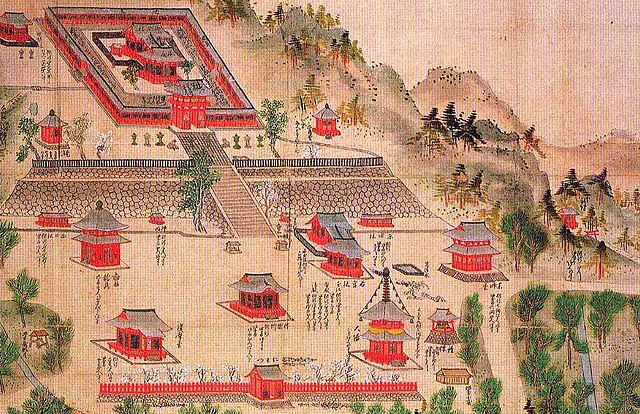Modern system of ranked Shinto shrines
The modern system of ranked Shinto shrines was an organizational aspect of the establishment of Japanese State Shinto. This system classified Shinto shrines as either official government shrines or "other" shrines. The official shrines were divided intoImperial shrines (kampeisha), which are parsed into minor, medium, or major sub-categories; and
National shrines (kokuheisha), which are similarly categorized as minor, medium, or major.
1878 engraving by Yōshū Chikanobu (1838–1912). The figures represented in these three panels are: * Centre: Front. Emperor Meiji in a Western chair with his wife, Empress Shōken, seated in the foreground. The Imperial couple are accompanied behind and in the flanking panels with an array of Shinto kami and historical figures from Japan's past. Rear. The kami Izanami, Kunitokotatchi and Izanagi. * Right: Front. Emperor Kōmei (seated in foreground),
A Shinto shrine is a structure whose main purpose is to house ("enshrine") one or more kami, the deities of the Shinto religion.
Two women praying in front of a shrine
Mount Nantai, worshiped at Futarasan Shrine, has the shape of the phallic stone rods found in pre-agricultural Jōmon sites.
An example of jingū-ji: Tsurugaoka Hachiman-gū-ji in an old drawing. In the foreground the shrine-temple's Buddhist structures (not extant), among them a pagoda, a belltower and a niōmon. The shrine (extant) is above.
Mount Fuji is Japan's most famous shintai.





